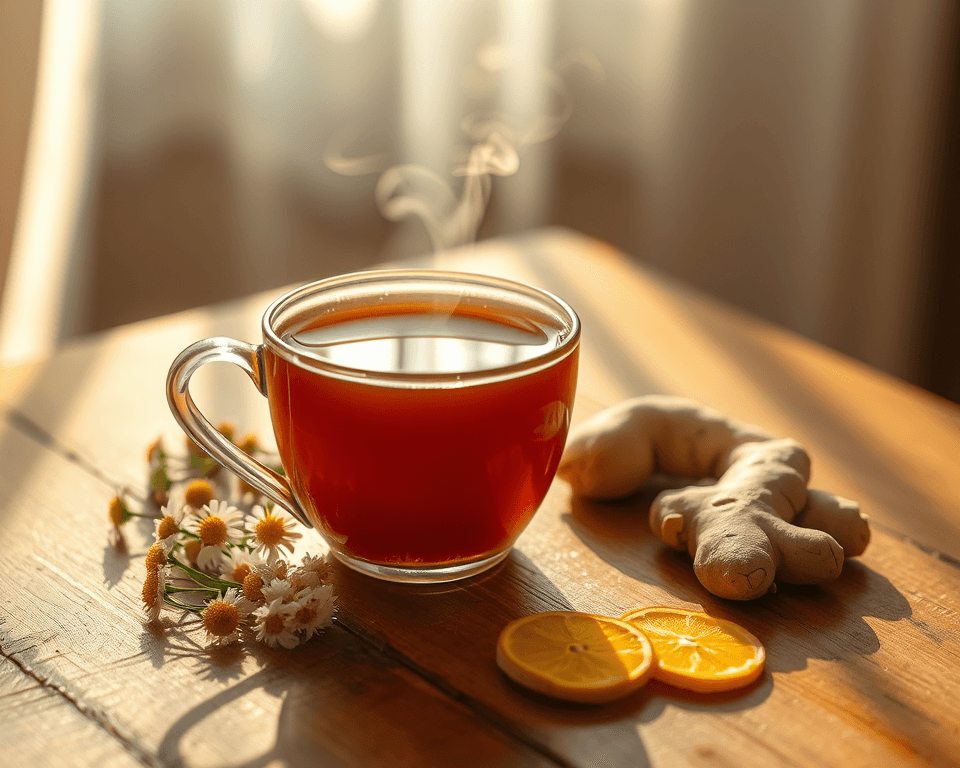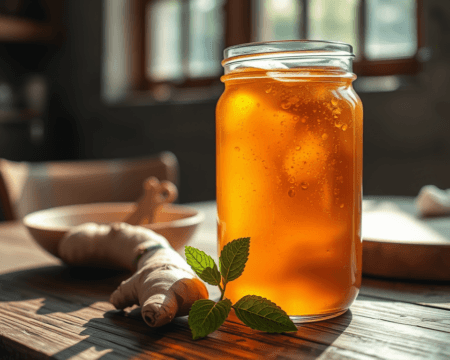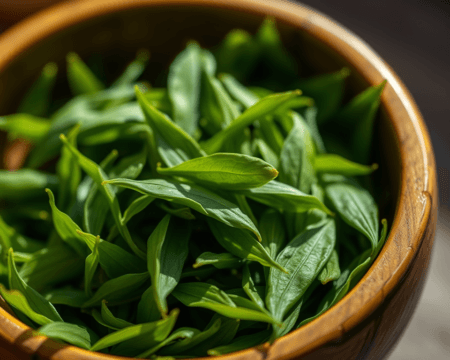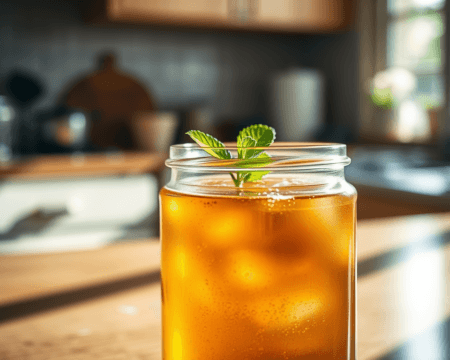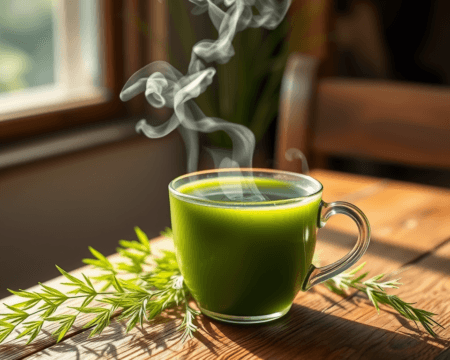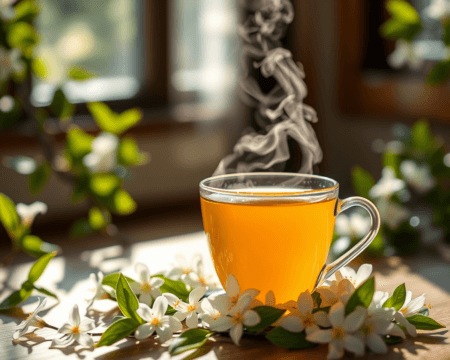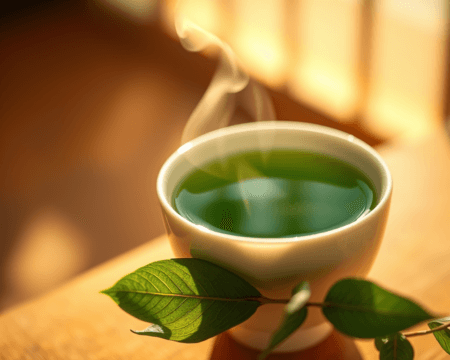Imagine waking up, feeling the weight of discomfort pressing down on your shoulders, your head pounding like there’s a concert going on inside. Sound familiar? We’re all on a quest for relief, and if there’s a natural way to tackle pain, count me in. That’s where tea comes in. Who would’ve thought that a simple cup of liquid can be such a powerhouse against pain? Trust me, the right tea can soothe your soul and tackle that pesky discomfort head-on.
Key Takeaways
- Certain teas, like chamomile and ginger, have proven pain-relieving properties that can tackle everything from headaches to joint pain.
- Scientific evidence supports the effectiveness of these teas, showing real results in pain management.
- Knowing how to brew tea properly is crucial to unlocking its full potential for relief.
- User testimonials highlight the powerful impact tea can have as a natural remedy for various pain conditions.
Introduction to Teas for Pain Relief
Understanding pain is a bit like trying to solve a mystery. It’s not just about what hurts; it’s about how that pain affects your life. Chronic pain can mess with your mood, productivity, and even your social life. And while conventional treatments are out there, they aren’t the only answer. Essential oils, herbal remedies, and alternative therapies can be game-changers in your pain management strategy.
Embracing a holistic approach means paying attention to what nature offers. Enter tea. With its rich history and medicinal properties, tea has been used for centuries to ease ailments. Let’s explore the specifics because knowledge is power, and the more you know, the better you can fight back against discomfort.
Types of Tea and Their Pain-Relieving Properties
Chamomile Tea
If you’ve ever reached for a chamomile tea bag before bed, you probably know it’s a soothing go-to. But let me tell you, it doesn’t just knock you out for sleep. Chamomile is loaded with anti-inflammatory and muscle relaxation properties.
Studies reveal that chamomile tea can help alleviate pain associated with digestive issues and anxiety. It’s like a warm hug for your insides. Imagine sipping on this golden liquid after a long day—ah, pure bliss!
Ginger Tea
Next up: ginger tea. This bad boy is not just for your sushi platter. Ginger is a potent anti-nausea superhero and a natural anti-inflammatory. If you’re struggling with joint pain or arthritis, ginger tea can be a fantastic ally.
Research shows that its compounds help in pain alleviation and even digestion. Your body could use a little ginger kick in those situations! Try brewing it super strong—steep some fresh ginger root in hot water. You’ll feel the warmth radiate through you, easing tension and discomfort.
Peppermint Tea
Feeling the tension build up in your shoulders? Grab peppermint tea. This refreshing drink isn’t just about making your breath minty fresh; it can tackle muscle tightness and headaches too. Peppermint contains menthol, which naturally cools and relaxes muscle tightness.
It’s not just science saying so, but also personal stories from users who’ve managed to fend off migraines with this tea. Easily brewed by steeping dried peppermint leaves, it leaves you feeling refreshed and soothed.
Turmeric Tea
Now, we can’t skip over turmeric tea. This isn’t just the star of your curry dish; it packs a serious punch when it comes to inflammation and pain relief, thanks to its main compound, curcumin. Turmeric tea has made waves in the health world as a natural anti-inflammatory and is great for joint health.
Combining it with a bit of black pepper enhances absorption. When you’re sipping on golden milk or turmeric tea, you’re not just indulging; you’re serving your body a huge benefit.
Green Tea
Last but not least, let’s talk green tea. Everyone knows it’s good for you, but did you know it’s also beneficial for pain management? High in catechins, green tea helps reduce inflammation and boosts overall wellness.
This tea also plays a role in chronic disease prevention. You can easily boost your metabolism all while sipping something delicious. The antioxidants work double-time to combat pain and promote healing—definitely worth making a daily ritual.
Scientific Evidence Supporting Tea for Pain Relief
Review of Studies and Findings
When we talk about tea, we are not just mumbling herbal guesses. There is real science backing this up. A review of clinical research shows that teas like chamomile, ginger, and turmeric have demonstrated significant efficacy in pain relief. People are getting relief from various pain conditions, transforming their daily routines into more manageable experiences.
Take for example a study where participants consuming ginger reported reduced pain related to arthritis significantly compared to those who didn’t. That’s the kind of evidence you need to start brewing.
Mechanisms of Action in Tea
How does all this magic happen? Let’s break it down. The biochemical processes within these teas interact with our pain pathways, potentially altering them to reduce distress.
For instance, the compounds in turmeric affect inflammation at the molecular level, while green tea’s rich antioxidants fight oxidative stress, further lowering pain. Knowing the mechanisms of action helps you appreciate the depth of what you’re drinking. When you’re sipping that chamomile or ginger tea, you’re not just enjoying a nice moment; you’re taking control of your comfort.
Preparing and Consuming Teas for Maximum Effect
Brewing Techniques for Effectiveness
To get the most out of your teas, brewing techniques matter. Did you know that the temperature of the water can make or break your tea experience? Here’s a quick breakdown:
- Chamomile: Use boiling water and let it steep for about 5 minutes.
- Ginger: Fresh ginger requires a longer steeping time, around 10-15 minutes, to really unlock those pain-relieving properties.
- Turmeric: Steep in hot water for at least 10 minutes and throw in a pinch of black pepper for enhanced absorption.
If you want to truly maximize the aroma and flavor, experiment with a French press or a good ol’ tea infuser.
Recommended Dosages and Consumption Tips
You can’t just guzzle down tea like you’re water before a race. There’s a rhythm to it. Aim for 2-3 cups daily of the specific teas discussed.
Watch for any side effects—like with ginger, crazily high amounts can lead to heartburn or digestive upset. So, listen to your body and adjust the dosage. It’s all about finding that sweet spot where you’re feeling good without overdoing it.
User Experiences and Anecdotal Evidence
Testimonials from Real Users
Look, personal stories matter. I’ve talked to people who’ve found significant pain relief through herbal teas. One user swore by ginger tea saying, “It’s my go-to for arthritis. I can feel the difference by just making a cup!”
Another said chamomile is a lifesaver for her migraines. Anecdotal evidence like this amplifies the narrative—real people are finding results, and tea is becoming their secret weapon in their wellness toolkit.
Common Misconceptions About Tea and Pain Relief
Now, let’s clear the air on some misconceptions. Some folks think tea is just a placebo. That’s straight-up myth-busting territory, folks! Sure, it’s not a miracle cure like a prescription might be, but its benefits are backed by research.
Don’t underestimate the power of herbal remedies. Knowing the reality versus fiction empowers you to use these drinks as part of your pain management strategy.
There you have it. These teas aren’t just relaxing; they’re practical tools in your fight against pain. So next time you feel discomfort creeping in, reach for one of these brews, sit back, and let nature do its thing. Experience the power of tea as you take steps toward a more comfortable life. Cheers to that!
Frequently Asked Questions
What types of pain can tea help relieve?
Teas like chamomile and ginger may alleviate various types of pain, including headaches, menstrual cramps, muscle soreness, and joint pain. Each tea has unique properties, so it’s essential to choose one that aligns with the specific type of discomfort you are experiencing.
How should I brew tea for maximum pain relief?
To maximize the pain-relieving properties of tea, use fresh, filtered water and steep the tea for the recommended time—usually 3 to 5 minutes. Opt for loose-leaf teas if possible, as they often provide a richer flavor and higher concentration of beneficial compounds.
Can I drink tea while taking pain medication?
While many herbal teas are safe to consume with most pain medications, it’s best to consult with your healthcare provider. Certain herbs may interact with medications, so ensure that any tea you choose complements your treatment plan.
Are there any side effects from drinking herbal teas?
Most herbal teas are safe for general consumption, but some may cause allergic reactions or digestive issues in sensitive individuals. Always start with a small amount to assess your body’s response, especially if you are trying a new tea for the first time.
How often can I drink tea for pain relief?
You can drink herbal teas several times a day, but moderation is key. Aim for 2 to 4 cups daily, dependent on your individual tolerance and any other health conditions. Pay attention to how your body responds to each tea.
Can children drink herbal teas for pain relief?
Many herbal teas can be safe for children, but it is advisable to consult with a pediatrician first. Avoid strong herbs and those known to have specific cautions for younger populations, as proper dosage and effects can vary widely.
Is it better to drink tea hot or cold for pain relief?
Both hot and cold herbal teas can be effective, depending on personal preference. Hot teas can provide immediate comfort and relaxation, while iced teas can be refreshing and soothing, especially in warmer weather or when dealing with inflammation.
What other remedies can I combine with tea for better pain relief?
You can enhance the effects of herbal tea by incorporating other natural remedies such as essential oils, topical treatments, or physical therapies like yoga and gentle stretching. Always ensure these combinations are safe for your specific health needs.
How long will it take to feel the effects of herbal tea on pain?
The time it takes to feel relief from herbal tea can vary. Some may experience immediate effects within an hour, while others may notice gradual improvement after several days of regular consumption. Consistency is essential for the best results.




